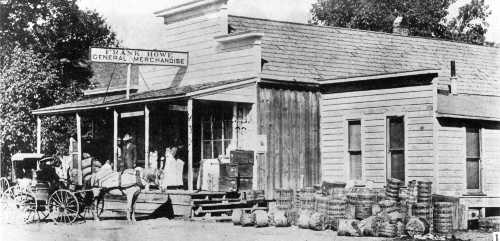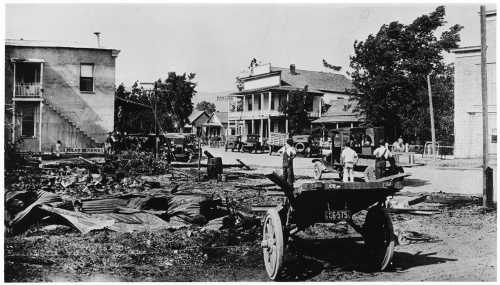
Avocados come in a variety of sizes. These were purchased at Lola's Market and the Rosales Market, Mexican markets in Lower Lake and Middletown, Calif., respectively. Photo by Esther Oertel.
Enjoying multiple spoonfuls of an avocado’s rich, silky, deeply satisfying flesh may feel like a guilty pleasure, but it’s actually a health-promoting act. It’s not often that something that tastes as extravagant as an avocado turns out to be immensely good for us, but happily for me they are, because I admit I’m a bit of an avocadoholic.
On busy days that leave me little time for lunch, a half avocado and a spoon are all I need to feel refreshed, nourished and ready to work again.
Slices of avocado layered on whole-wheat toast make for a quick and healthful breakfast that’s immensely satisfying, and bits of diced avocado give a salad richness and body.
My favorite quick and easy salad with avocado includes greens, thinly sliced red onions and fresh orange slices drizzled with some strong extra virgin olive oil and balsamic vinegar.
A topping of diced avocado provides balance for a plethora of favorite dishes. Its freshness lightens up hearty black bean soup, while it provides pleasant “heaviness” to a light and refreshing bowl of gazpacho.
Of course, avocado is perfect for accompanying anything with a Mexico or South American spin, no surprise since they’re a time-honored part of their culinary tradition.
Fish tacos cry out for avocado, and magic is made when avocados are mashed in a bowl with lime, cilantro, cumin and the like for guacamole.
Oval, egg or pear-shaped, these fruits have a luscious, creamy green interior and the dark, pebbly exterior of some cultivars has earned them the nickname “alligator pear” for its resemblance to the skin of that beast.
Native to central Mexico, they grow on a flowering tree related to those that produce bay leaves, cinnamon and camphor. They’ve been cultivated for more than 10,000 years in a wide swath that extends southward from the Rio Grande to Peru.
Mexico dominates the world market for avocado exports, but California is king when it comes to avocados here in the states, growing 95 percent of the crop produced in the nation, the bulk of it in San Diego County.
They’re also widely cultivated in Asia, where they’ve become part of its varied cuisine over the centuries, as well as in South America. This subtropical species needs a climate without frost and little wind, which dehydrates the flowers and affects pollination.
They’re a climacteric fruit, meaning, like the banana, they reach maturity on the tree, but only ripen off of it. They must be picked at the mature stage to ripen properly, and will usually reach optimum ripeness within a few days at room temperature.
In years past, avocados were used in place of butter for seamen who made the long voyage between Europe and the Caribbean, giving rise to one of its more ancient monikers, midshipman’s butter. When compared to butter, however, there’s a vast difference in nutrition.
Two tablespoons of avocado has 50 calories, while the same amount of butter has 204. In addition, that amount of butter has 23 grams total fat (with 14.6 grams of it saturated) while avocado has 4.5 total grams, 0.5 grams of it saturated. The butter has 61 milligrams of cholesterol and 176 milligrams of sodium (assuming it’s the salted variety); the avocado has none of either.
Does that make you want to put avocado in your butter dish? It does me.
Avocados provide nearly 20 essential nutrients, including fiber, potassium (more than potassium-rich bananas), vitamin E, B vitamins and folic acid.
They also act as a nutrient booster because they help the body absorb more fat-soluble nutrients, like alpha and beta-carotene and lutein, in foods that are eaten with the fruit.
While avocados are high in fat (about 85 percent of its calories comes from it), the fat in avocado is unusual and provides research-based health benefits. One fat found in avocados exists mainly in sea plants, being rarely found in those that grow on land.
Similar to olives and olive oil, avocados contain high amounts of oleic acid, a mono-saturated fatty acid that has been shown to be beneficial in preventing heart disease.

While the flesh of these avocados looks similar, the smaller Hass avocado has a higher fat content, giving it a richer taste. Photo by Esther Oertel.
Fats found in avocados also have wide-ranging anti-inflammatory benefits, as well as assisting in regulating blood sugar.
There are many varieties of avocados, ranging in size from the one-ounce “avocadito” (also known as the cocktail avocado) to one that weighs nearly four pounds.
In addition to near-black, thick, pebbly skin, avocados can have smooth bright green or black skin that’s thin, making it difficult to peel. There’s a tiny Mexican avocado that can be eaten like a plum, skin and all.
The world favorite is the Hass avocado, with its high fat content and pleasant-tasting, dense flesh. Fully 85 percent of the avocado crop worldwide is devoted to its cultivation.
Avocados may be stored in the fridge if they’re the desired ripeness (yielding to gentle pressure for typical use or very soft for guacamole); otherwise, leave them at room temperature to ripen up. (The ripening process can be sped up if avocados are stored in a paper bag with a banana, which emits a gas that hastens ripening.)
Since avocados turn brown when exposed to air for more than a few minutes, sprinkle them with a bit of fresh lemon juice if they won’t be used right away.
In various parts of the world, including the Philippines, Brazil, Indonesia, Vietnam and India, avocados are frequently used for milkshakes and in desserts.
Today’s recipe, a fruity tropical salad with a grain base, was inspired by a dish prepared by a friend’s Filipino wife, a sweet dessert made with avocado, mango and condensed milk that she remembers from her native country. While my salad has a bit of natural sweetness from the fruit, it’s not overly sweet and works well as a side dish.
The recipe utilizes quinoa (pronounced keen-WAH), a gluten-free, high-protein grain. Unlike many grains, quinoa is a complete protein, meaning it provides all the essential amino acids. I’ve used two colors of the grain for presentation, but any type of quinoa may be used. Enjoy!
Tropical quinoa salad with avocado and mango
¼ cup red quinoa
¼ cup traditional quinoa
½ teaspoon salt
1 cup water (for cooking quinoa)
Juice and zest of one lime
Juice and zest of ½ orange
2 tablespoons peanut oil
1 small clove garlic, crushed with a pinch of salt
¼ teaspoon cumin
2 scallions, thinly sliced, whites and greens
About 2 tablespoons each of chopped fresh cilantro and mint
½ mango, diced
½ cup diced pineapple
½ avocado, diced
¼ cup toasted almonds, chopped (or toasted slivered almonds)
Combine quinoa, salt, and water in pot and bring water to a boil. Cover pot and simmer until all water is absorbed into quinoa and grain becomes tender, about 10 to 15 minutes. Remove from heat and transfer quinoa to a large serving bowl to cool.
Combine juices, zest, oil, garlic, and cumin in small bowl. Mix well and pour over quinoa while it is still a bit warm.
Add scallions, mint, cilantro, mango, pineapple, and avocado to salad. Toss to mix well.
Just before serving, add almonds to salad. (This helps them stay crunchy.)
If making ahead of time, salad will keep well in fridge several hours. If making the night before, dress quinoa, but add fruit and herbs the next day.
This recipe makes enough for at least four.
Recipe by Esther Oertel.
Esther Oertel, the “Veggie Girl,” is a culinary coach and educator and is passionate about local produce. Oertel teaches culinary classes at Chic Le Chef in Hidden Valley Lake, Calif., and The Kitchen Gallery in Lakeport, Calif., and gives private cooking lessons. She welcomes your questions and comments; e-mail her at This email address is being protected from spambots. You need JavaScript enabled to view it..
Follow Lake County News on Twitter at http://twitter.com/LakeCoNews, on Tumblr at www.lakeconews.tumblr.com, on Facebook at http://www.facebook.com/pages/Lake-County-News/143156775604?ref=mf and on YouTube at http://www.youtube.com/user/LakeCoNews.

 How to resolve AdBlock issue?
How to resolve AdBlock issue? 










